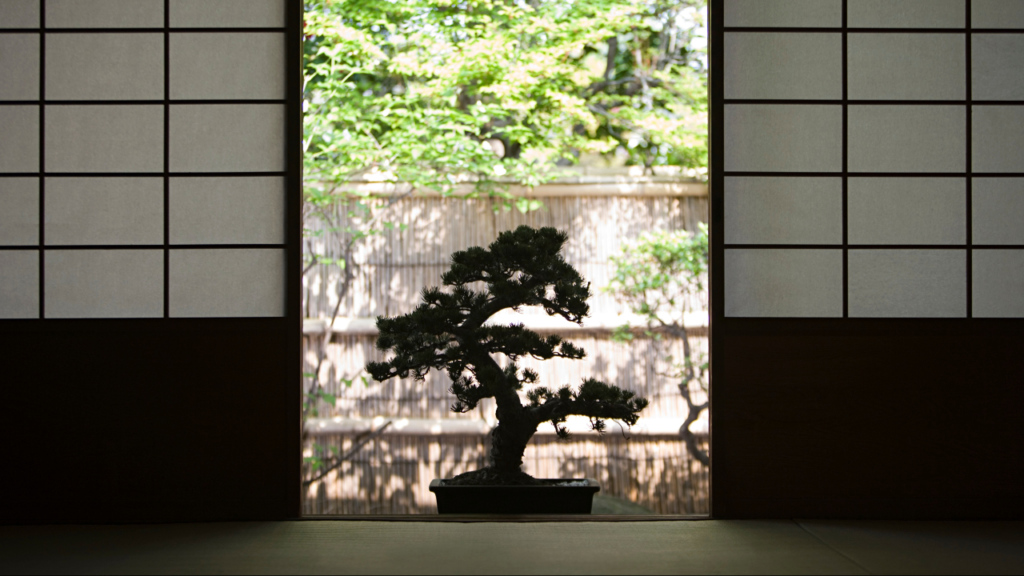Bonsai trees, like all living things, require certain conditions to thrive. One of the most crucial factors in the health and development of your bonsai is its positioning, particularly in relation to sunlight. This guide will help you understand the importance of positioning and how to ensure your bonsai gets the right amount of sunlight.
Understanding Your Bonsai’s Sunlight Needs
Most bonsai trees prefer a bright spot, usually with some direct sunlight. However, the intensity and duration of sunlight exposure can vary depending on the species of your bonsai. Outdoor bonsai trees, for instance, generally require a few hours of direct sunlight each day. Their leaves and internodes can grow too large without enough light, and they may become prone to pests and diseases. Most conifers, a popular choice for bonsai, should be placed in full sun for healthy growth.
Indoor bonsai trees also need a bright position. Some species prefer lots of sunlight, while others thrive in half shade. It’s important to place indoor bonsai somewhere with a constant temperature. However, the intensity of light indoors is often much lower than outside. Therefore, it’s crucial to place your bonsai in a bright spot, preferably directly in front of a south-facing window. If the intensity of light is still too low, consider using artificial lighting, such as fluorescent lighting or light-emitting diodes, for about 10 hours a day.
| Bonsai Species | Light Requirements | Indoor/Outdoor |
| Juniper (Juniperus) | Full sun to partial shade | Outdoor |
| Ficus (Ficus retusa) | Bright, indirect light | Indoor |
| Chinese Elm (Ulmus parvifolia) | Full sun to partial shade | Both |
| Azalea (Rhododendron indicum) | Partial shade | Outdoor |
| Maple (Acer palmatum) | Full sun to partial shade | Outdoor |
| Jade (Crassula ovata) | Full sun | Indoor |
| Zelkova (Zelkova serrata) | Full sun | Outdoor |
| Pine (Pinus thunbergii) | Full sun | Outdoor |
| Boxwood (Buxus sempervirens) | Full sun to partial shade | Both |
| Serissa (Serissa foetida) | Bright, indirect light | Indoor |
Positioning Your Bonsai: Indoor vs. Outdoor
The positioning of your bonsai tree can significantly impact its health and growth. For outdoor bonsai, a bright spot that receives direct sunlight for about half the day is ideal. The location should also be protected from strong winds.
Indoor bonsai trees, on the other hand, should be placed in a warm environment with a constant temperature. A bright spot is preferred, and the location should allow for some sunlight, depending on the species.
Positioning and Local Climate
The local climate and time of year should also be considered when positioning your bonsai. For instance, in hot climates or during summer months, your bonsai may require a shaded spot during the hottest part of the day to prevent scorching. Conversely, in cooler climates or during winter, your bonsai may benefit from a position that maximizes sunlight exposure.
Positioning and Bonsai Health
Proper positioning can also help prevent common bonsai health issues. For example, a well-lit position can help prevent fungal diseases, which often thrive in damp, shaded conditions. Additionally, adequate sunlight exposure can enhance your bonsai’s coloration and promote healthy, balanced growth.
Conclusion: The Art of Positioning Your Bonsai
Positioning your bonsai tree correctly is an art that balances the tree’s species, local climate, and sunlight needs. By understanding these factors and adjusting your bonsai’s position as needed, you can ensure your bonsai tree thrives and continues to captivate with its unique charm. Remember, the key to successful bonsai care is balance – providing enough sunlight but not too much. Happy bonsai growing!
Bonsai Lighting FAQs
What are the light requirements for bonsai trees?
Most bonsai trees prefer a bright spot, usually with some direct sunlight. However, the intensity and duration of sunlight exposure can vary depending on the species of your bonsai. Outdoor bonsai trees generally require a few hours of direct sunlight each day, while indoor bonsai trees need a bright position, preferably directly in front of a south-facing window.
How does the local climate affect bonsai lighting requirements?
The local climate and time of year should be considered when positioning your bonsai. For instance, in hot climates or during summer months, your bonsai may require a shaded spot during the hottest part of the day to prevent scorching. Conversely, in cooler climates or during winter, your bonsai may benefit from a position that maximizes sunlight exposure.
Can I use artificial lighting for my indoor bonsai tree?
Yes, if the intensity of light indoors is too low, you can use artificial lighting, such as fluorescent lighting or light-emitting diodes (LEDs), for about 10 hours a day to provide your bonsai with the light it needs.
